Users
All registered users are listed under Users. New registered users will automatically be given the visitor role and added to the users list.
When the server is running in external authentication mode (Saml2.0 or AD), users will automatically be enrolled into the system and given the member role once they login to the system.
In local database authentication mode, users will either have to be created (manually or bulk import) or can use the Register option when enabled. If a visitor registers a new account, it will not be activated until the administrator does so.

Add new local user
- Click + New User to manually add users
- Complete all fields
- Commit with Register
- Continue with the next user or select Close
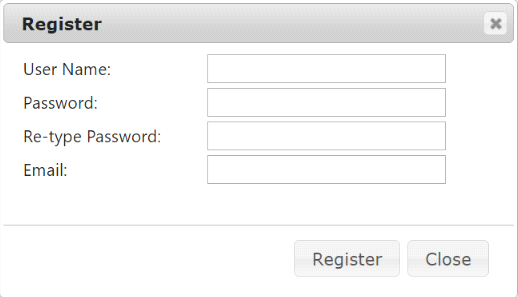
Give user a role
Now you have created a new user you can add roles.
- Click more… behind the new user
- Select a role in the left column and click >> to add the role
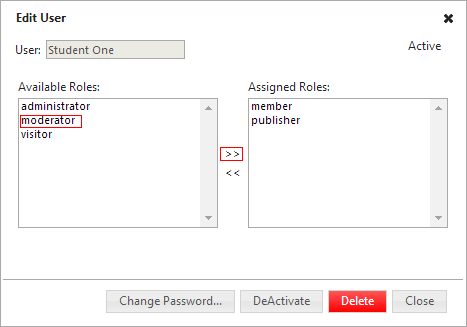
- Commit your work with Close
De-activate user
To disable a user temporarily you can De-activate the account.
- Click more… behind a user
- Click DeActivate to disable the user account
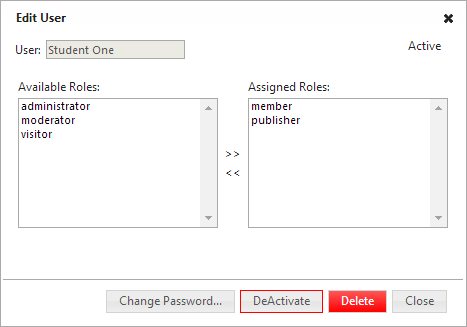

Afterwards you can easily activate the user again.
Delete user
To disable a user permanently you can delete the user account.
- Click more… behind a user
- Click Delete to remove the user account
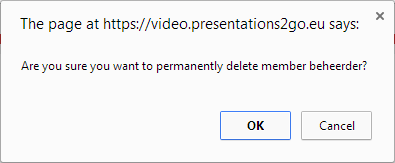
Import users
Depending on the authentication mode your server is running in (local database accounts or external authentication provider like Saml2.0 or Active Directory) there will be a different import format.
You can download a sample import file when you choose the import user function. When in external authentication mode the .csv file will look like this:
username,roles(;),group(;),action
e.g.:
user1,librarian;member;audience,group1,import
user2,librarian;member;audience,group1;group2,import
user3,publisher;member;moderator,group1,import
user4,visitor,group1,import
user5,publisher;member,group1,delete
user6,publisher;member,group1,delete
Multiple roles or groups can be assigned by using a semicolon. The action column has been added to support “import” or “delete” action.
In case you server is running in local database authentication mode the format will like this:
email,password,username,roles,group,activate, action
user1@example.com,123456,user1,librarian;member;audience,group1,FALSE,import
user2@example.com,123456,user2,librarian;member;audience,group1,TRUE,import
user3@example.com,123456,user3,publisher;member;moderator,group1,FALSE,import
user4@example.com,123456,user4,visitor,group1,TRUE,import
user5@example.com,123456,user5,visitor,group1,TRUE,delete
user6@example.com,123456,user6,visitor,group1,TRUE,delete
Change password

When local database accounts are used, users can change their password by clicking on the username on the top right of the browser window.
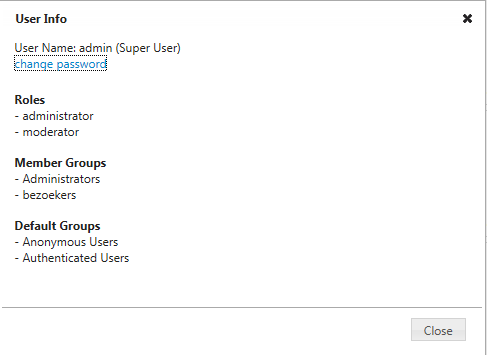
Administrators can change user passwords in the user management interface.